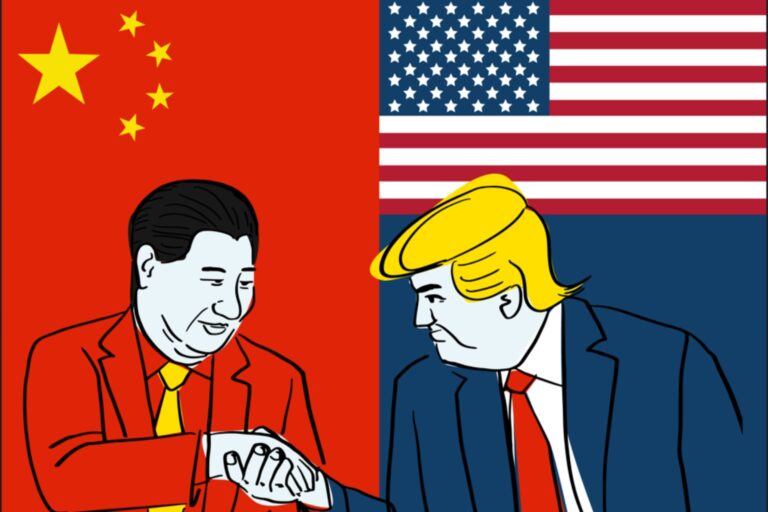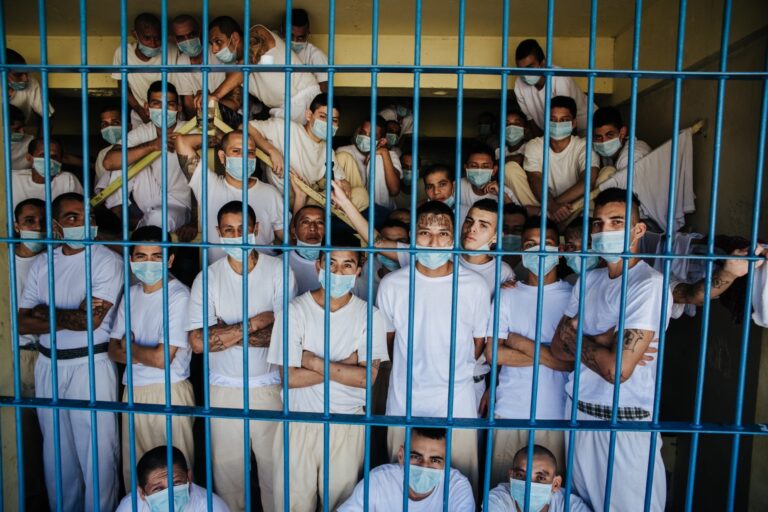Upon his inauguration, President Donald Trump signed an executive order labelling Mexican cartels as ‘foreign terrorist organizations’ (FTOs) and confirmed a twenty-five percent tariff against Mexico as part of a strategic response to tackle the fentanyl crisis.1,2 This follows a thread of mainstream Republican rhetoric, with some of their most noteworthy solutions involving a ‘war on drugs’ policy, endorsed by prominent figures like Vice President JD Vance, who proposed a military intervention in 2023.3,4 This has now gained traction after the Secretary of Defense Pete Hegseth confirmed that military strikes against Mexican cartels are ‘on the table.’5 Furthermore, Trump and his new border czar, Thomas Homan, have often converged security priorities with an anti-Mexican immigration stance, linked closely to the fentanyl question.6 Essentially, the punitive measures deployed against Mexico are part of a wider national security project that responds to the growing drug trafficking-induced US ‘public health crisis.’7
Indeed, the scale of the fentanyl crisis is particularly concerning. In 2022 alone, over 79,000 US citizens reportedly died of drug overdoses caused primarily by the consumption of illicitly produced fentanyl.8 Both a DEA Intelligence Report and a CRS report published last year acknowledge the principal role of Mexican transnational criminal organization networks in effectively coordinating this inflow.9,10 However, both reports also highlight the centrality of a far-reaching global network of precursor chemical shipments, primarily from the People’s Republic of China (PRC), underscoring the vital need for a transnational approach to combating the problem. In singling out Mexico, therefore, the proposed regional security framework ignores the transnational nature of the illicit fentanyl network.11
In stark contrast, Mexican President Claudia Sheinbaum’s human-security-centered approach proposes tackling cartel violence via her ‘four axes of strategy’, which emphasize ‘addressing [its] causes.’12 This entails supporting the most vulnerable communities by providing accessible educational and occupational paths for the youth to better their socio-economic standing. This aims to prevent them from joining criminal organizations as a means of sustenance. In many ways, it imitates the Barrio Adentro program implemented by Sheinbaum during her tenure as mayor of Mexico City in 2020 to lower criminality rates.13 The success of the program in achieving a 56% reduction in homicide rates, a 53% decrease in high crime, and a marked increase in a community-wide sense of security across Mexico City reflects the logic of the development-security nexus.14 This nexus presupposes a positive correlation between higher socio-economic and educational attainments and lower levels of crime and violence.
A Flawed ‘War on Drugs’ Approach
Implementing a militarized counter-narcotics regional security policy by the United States to tackle challenges posed by drug cartels not only fundamentally ignores the complexity of the problem but also carries substantial implications. Firstly, such an approach would be detrimental to longstanding US-Mexico bilateral ties, especially since Sheinbaum opposed both the tariffs and FTO label, reinforcing her belief in ‘collaborative coordination’.15 This could also likely legitimize a non-consensual military intervention in Mexican territory. Moreover, since 40% of the Mexican GDP is dependent on US exports, any one-upmanship threatens to destabilize its economy. A dysfunctional economy would only encourage cross-border illegal migration and incentivize Mexican residents to participate in illicit-economy networks, fueling its cartel problem.16
Most importantly, a war on drugs approach would dramatically fail to produce the desired outcomes. It could transform rather than eradicate drug cartels, whose operations could shift to other locations and drive widespread regional destabilization. This logic is reflected in the failure of the US-Colombian war on drugs policy implemented through Plan Colombia to support the Colombian government in its efforts to combat paramilitary groups and drug cartels.17 This program transformed cocaine production, contributing to growing coca production networks in surrounding nations and recalibrated drug trafficking routes from the Colombia-Bahamas-Florida corridor to Mexico, illustrating how ‘war on drugs’ policies can drive widespread regional destabilization. Within Mexico, US-supported kingpin strategies like the Merida Initiative and the militarization of Mexico between 2006 and 2018 have caused heightened levels of homicide and insecurity, illustrating that standard military approaches fail in eradicating cartels and aggravate systemic inequalities that nurture an ecosystem conducive to the sustenance of illicit economies.18,19
Researchers have most recently demonstrated that, contrary to conventional assumptions, it is the endless access to a pool of expendable local human resources that makes cartels formidable in sustaining operations.20 This means cartels are able to comfortably replenish their workforce in spite of losses suffered due to infighting and government-led crackdowns. In areas where employment in illicit cartel enterprises has emerged as a dominant economic paradigm, primary ‘pull factors’ for increased recruitment have included poverty linked to low wages, disrupted education, and job insecurity.21,22,23 In certain areas, cartel infestation has even prompted coerced recruitment policies, like for Guerrero’s indigenous communities, and through social networks where entrenched perceptions of socioeconomic mobility associated with joining cartels take center stage.24,25 However, while analysts have recognized the need for long-term policy frameworks focused on disrupting cartel recruitment in line with a development-security nexus logic, these have either been underemphasized or ignored altogether.
FDIs: Great Power Competition and National Development
President Sheinbaum’s national development policy, ‘Plan Mexico’, introduced earlier this year to address ‘poverty and inequality’, presents a remarkable break in this regard.26 Most notably, it places a substantial emphasis on foreign direct investment (FDI) inflows within an investment portfolio worth US$277 billion, seeking to empower national production and job generation. Quantitative studies in relation to FDI-induced real wage growth in China and the United States have demonstrated that foreign investments effectively drive real wage growth in local communities.27,28 Additionally, the skill premium induced sponsored training and upgradation of infrastructure facilitates jobs, asset generation, and knowledge transfer. Consequently, in the Mexican case, FDI inflows are well-placed to disrupt the illicit-economy sector, especially by promoting community-wide job security and asset-generation. This aligns well with the wider strategy to create a recruitment vacuum for the illicit sectors by offering secure employment alternatives according to the region’s needs for a more robust human-security architecture. Furthermore, this emphasis on FDIs especially agrees with US national security interests, as Mexican immigrants have frequently cited lack of job opportunities, abysmal wages, and degrading human security as primary motivations for their cross-border migration.29
Over the last two decades, however, China’s influence has rapidly grown in the region through investments in the space, energy, and infrastructure sectors, effectively replacing the United States as the region’s largest trading partner.30 Now, with its Belt and Road Initiative, China has managed to obtain ‘commercial surveillance capabilities’ and growing clout over customs and security in key ports, including in Mexico.31 The latter is especially concerning, given that a large proportion of chemical precursors of fentanyl flowing into Mexico originates from the PRC. Indeed, there is evidence that between 2015 and 2023, more than 270 million doses of fentanyl were trafficked through PRC-controlled ports of Lázaro Cárdenas, Ensenada, and Manzanillo, demonstrating the extent to which these ports are strategically used by transnational criminal organizations to fuel fentanyl production.32,33 An increasingly unreliable US partnership with Mexico and China’s continued investments in alignment with Sheinbaum’s priorities could have two-fold implications.34
Firstly, given evidence proving collusion between Chinese organized-criminal groups and Mexican cartels, any growing PRC influence threatens to destabilize Mexico’s internal and regional security architecture further.35 Secondly, because confrontational approaches only threaten to discourage regional partnerships, Washington must recalibrate its strategic approach. It must evaluate whether it can afford a desperate Mexico turning to the PRC for more investments at the expense of possibly exacerbating the fentanyl crisis and undermining its security priorities. Instead, a more attractive policy avenue would be emphasizing its consonance with the development-security nexus put forward in Plan Mexico. It must take the lead in seeking reliable, triangular cooperation with willing investors in Mexican development—like India—especially considering the existing political will reflected in the recently announced infrastructure-heavy transnational US-India trade corridor, and India’s capacity to step into the FDI equation to challenge China’s unpromising footprint.36
Why is India an Attractive Partner?
India’s interests in Latin America stem from a growing desire to act as a proactive partner in Global South development. Indian External Affairs Minister Jaishankar’s emphasis on expanding India’s Latin American footprint and a recent bilateral trade and investment summit reinforcing partnerships in digital innovation, IT, and the automotive sector, underscore this commitment.37 Given its history of successful nearshoring ventures, a partnership with Mexico presents a strategic opportunity for India.38 Existing Indian investments in Mexico’s manufacturing sector, which has been noted for its skill-premium and associated increase in wages, include Parle-G’s food-processing plant and UPL’s US$11 million R&D and manufacturing facility in Saltillo.39,40 Broadly speaking, this reflects a cemented interest in benefiting from nearshoring and gaining access to the growing consumer potential of Latin American markets, in line with a 60% growth in regional disposable income projected by 2040.41
This trend is further reinforced by proposed investments from the Automotive Component Manufacturers’ Association of India and UFLEX’s US$100 million expansion.42 India’s interest coincides with Sheinbaum’s vision to transform Mexico into a scientific and technological powerhouse and the newly introduced US$1.48 billion tax incentives to attract FDIs in electromobility, telecommunications, and manufacturing.43,44 Mexico’s welcoming financial incentives for nearshoring and evidence of shared tech-centric aims demonstrate the potential of this partnership and the viability of a mutually beneficial triangular cooperation.
For the Mexican economy, Indian FDIs offer competitive wages and job generation. In Nuevo León, for instance, proposed high asset-generation investments by Indian companies are expected to generate over 6,000 jobs, with additional IT training and skill-development facilitated by Infosys.45 Last year, a Tata Consultancy Services giga-factory investment from India was projected to create around 2,500 higher-salaried jobs, and US$200 million was invested by electromobility company Vimecarti Viney to set up their first ‘manufacture-in-Mexico’ plant.46,47 According to official estimates, salaries of at least 50,000 pesos (US$2,944) are expected at the TCS facility, which is five times the region’s median wage of 10,000 pesos.48,49 Strategically speaking, these investments create opportunities for social mobility and cut into cartel recruitment, besides promoting skill-development amongst the lower-skilled workforce, who are often victims of cartel recruitment drives. This is particularly important, as cartels thrive on enlisting as many as 350 to 370 new recruits weekly.50 Incentivizing migration from cartel-dominated areas to industrial hubs for integration into the legal labor market would complement policing by cutting down on the essential resource that cartels largely depend on for workforce replenishment. Moreover, this view aligns with the wage-gap-induced migration within Mexico observed by analysts, where regions with higher net wages attract significant labor force from their neighboring areas.51
Notably, despite states like Nuevo León ranking in the lower half of the peace index and fifth on a national level for the number of daily violent deaths, companies have shown willingness to invest in its growing manufacturing potential and readily available workforce.52,53 In fact, in the period between January 2023 and June 2024, Nuevo León received US$4.8 billion in FDIs, placing it as the second-best recipient of FDI in Mexico.54 Businesses with security concerns could invest in manufacturing in areas like Querétaro and Aguascalientes, where there are robust local laws and security-enforcement architectures, and focus on expanding lower-skilled labor recruitment to attract talent from the region and beyond.55 Especially since cartels have been deeply problematic for companies in regions with a lack of government control, investing in secure regions while integrating surrounding areas and beyond into the legal labor market presents an attractive way for FDIs to contribute substantially to the success of the development-security apparatus.56
Conclusion
The United States must realize that confrontational approaches with its southern neighbor will not take its ambitions to eradicate cartels far, especially given how cartels feast on unemployment and poverty. Any standalone militarized intervention threatens to further worsen Mexico’s economy and human (in)security, propping up the illicit economy networks. Instead, a grand economic statecraft strategy needs to complement law enforcement and border control in pursuing a long-term eradication of cartels. The United States must integrate its Indo-Pacific architecture into its Latin American strategy, fostering a triangular cooperation with reliable partners like India to counterbalance thriving PRC influence. If its confrontational policy remains unaltered, Washington not only stands to lose its ‘war on drugs’ but also risks alienating a vital regional ally – ultimately surrendering more control and influence to its largest geopolitical competitor.
References
[1] The White House. 2025. “Designating Cartels And Other Organizations As Foreign Terrorist Organizations And Specially Designated Global Terrorists.” The White House. 20 January. https://www.whitehouse.gov/presidential-actions/2025/01/designating-cartels-and-other-organizations-as-foreign-terrorist-organizations-and-specially-designated-global-terrorists/.
[2] James Politi, Steff Chávez, and Aime Williams. 2025. “Donald Trump threatens a 25% tariff within days for Mexico and Canada.” Financial Times. 20 January. https://www.ft.com/content/d5141418-6827-4027-92f2-138b43315e31.
[3] Correa-Cabrera, Guadalupe. 2024. “The Dangerous Narrative of the ‘War on Cartels’.” Georgetown Journal of International Affairs. 23 November. https://gjia.georgetown.edu/2024/11/23/the-dangerous-narrative-of-the-war-on-cartels/.
[4] Mitsanas, Michael. 2023. “Sen. JD Vance endorses the U.S. military’s going after drug cartels in Mexico.” NBC News. 2 July. https://www.nbcnews.com/politics/immigration/sen-jd-vance-endorses-us-military-going-drug-cartels-mexico-rcna91902.
[5] Reforma. 2025. “En la mesa, ataques a cárteles.” Reforma. 2 February. https://www.reforma.com/aplicacioneslibre/preacceso/articulo/default.aspx?__rval=1&urlredirect=https://busquedas.gruporeforma.com/buscar/reforma/documentos/VisorArticulos.aspx?idComptto=6&sIdIdentificadorParm=1s6990409d&idproducto=3&id=2947274&tipoElement.
[6] Li, Emma. 2024. “Trump’s ‘border czar’ claims Mexican cartels killed a quarter-million Americans with fentanyl. Here’s a fact check.” CSB News. 7 December. https://www.cbsnews.com/news/trump-border-czar-tom-homan-fact-check-mexican-cartels-u-s-fentanyl-deaths/.
[7] The White House. 2025. “Imposing Duties to Address the Flow of Illicit Drugs Across Our Northern Border.” The White House. 1 February. https://www.whitehouse.gov/presidential-actions/2025/02/imposing-duties-to-address-the-flow-of-illicit-drugs-across-our-national-border/.
[8] National Center for Health Statistics. 2023. “Provisional Data Shows U.S. Drug Overdose Deaths Top 100,000 in 2022.” Center for Disease Control and Prevention. 18 May. https://blogs.cdc.gov/nchs/2023/05/18/7365/#:~:text=Findings%3A,2022%2C%20from%20107%2C573%20to%20105%2C452.
[9] Drug Enforcement Administration. 2020. “Fentanyl Flow to the United States.” Intelligence Report [Unclassified], Strategic Intelligence Section, 4. https://www.dea.gov/sites/default/files/2020-03/DEA_GOV_DIR-008-20%20Fentanyl%20Flow%20in%20the%20United%20States_0.pdf.
[10] Congressional Research Service. 2024. “Illicit Fentanyl and Mexico’s Role.” In Focus. https://www.congress.gov/crs-product/IF10400.
[11] Drug Enforcement Administration. 2020. “Fentanyl Flow to the United States.” Intelligence Report (Unclassified), Strategic Intelligence Section, 4. https://www.dea.gov/sites/default/files/2020-03/DEA_GOV_DIR-008-20%20Fentanyl%20Flow%20in%20the%20United%20States_0.pdf.
[12] Gobierno Ciudad de México. 2024. “Presidenta Claudia Sheinbaum presenta Estrategia Nacional de Seguridad.” Gobierno CDMX. 8 October. https://www.gob.mx/presidencia/prensa/presidenta-claudia-sheinbaum-presenta-estrategia-nacional-de-seguridad.
[13] Gobierno Ciudad de México. 2022. “Barrio Adentro en Iztapalapa.” Gobierno Ciudad de México. 10 August. https://gobierno.cdmx.gob.mx/noticias/barrio-adentro-en-iztapalapa/.
[14] Franco, Marcela Figueroa. 2022. “How Mexico City Developed An Integrated Approach to Citizen Security.” Apolitical. 24 October. https://apolitical.co/solution-articles/en/mexico-city-a-successful-strategy-for-peace.
[15] Reuters. 2025. “Mexican President Dubs Trump Decree on Drug Cartels Unhelpful.” Reuters. 24 January. https://www.reuters.com/world/americas/mexican-president-touts-legal-effort-analyze-us-declaration-drug-cartels-2025-01-24/.
[16] McKibbin, Warwick J., and Marcus Noland. 2025. “Trump’s threatened tariffs projected to damage the economies of the US, Canada, Mexico, and China.” Peterson Institute for International Economics. 17 January. https://www.piie.com/blogs/realtime-economics/2025/trumps-threatened-tariffs-projected-damage-economies-us-canada-mexico.
[17] Lee, Brendon. 2020. “Not-So-Grand Strategy: America’s Failed War on Drugs in Colombia.” Harvard International Review. 9 January. https://hir.harvard.edu/americas-failed-war-on-drugs-in-colombia/.
[18] Ocampomi. 2021. “The Merida Initiative.” U.S. Embassy and Consulates in Mexico. 7 September. https://mx.usembassy.gov/the-merida-initiative/#.
[19] International Crisis Group. 2022. “Crime in Pieces: The Effects of Mexico’s ‘War on Drugs,’ Explained.” International Crisis Group. 4 May. https://www.crisisgroup.org/content/crime-pieces-effects-mexicos-war-drugs-explained.
[20] Reardon, Sara. 2023. “Cutting Cartel Recruitment Could Be The Only Way to Reduce Mexico’s Violence.” Science. 21 September. https://www.science.org/content/article/cutting-cartel-recruitment-could-be-only-way-reduce-mexico-s-violence.
[21] Gil, Raul Zepeda. 2024. “Mexican Government Failing to Provide Decent Jobs For Vulnerable Youth – Leaving the Door Open to Cartel Recruitment.” Oxford Department of International Development. 31 May. https://www.qeh.ox.ac.uk/blog/mexican-government-failing-provide-decent-jobs-vulnerable-youth-leaving-door-open-cartel.
[22] Burnett, John. 2009. “Mexican Drug Cartels Recruiting Young Men, Boys.” National Public Radio. 24 March. https://www.npr.org/2009/03/24/102249839/mexican-drug-cartels-recruiting-young-men-boys.
[23] Smith, Tyler. 2019. “Turning to Cartels.” American Economic Association. 12 June. https://www.aeaweb.org/research/trade-induced-violence-mexico-china.
[24] Plevin, Rebecca, and Omar Ornelas. 2019. “Join, Leave or Die: The Options Indigenous Mexicans Face When Cartels Invade Their Lands.” Desert Sun. 8 March. https://www.desertsun.com/in-depth/news/2019/02/28/mexican-cartel-violence-displaces-guerrero-indigenous-communities/2280762002/.
[25] Chomczyński, Piotr A, Roger Guy, and Elena Azaola. 2023. “Beyond money, power, and masculinity: Toward an analytical perspective on recruitment to Mexican drug trafficking organizations.” International Sociology 353-371. https://journals.sagepub.com/doi/abs/10.1177/02685809231168579?journalCode=issa.
[26] Gobierno Ciudad de México. 2025. “Presidenta Claudia Sheinbaum presenta el Plan México que contempla un portafolio de inversiones de 277 mmdd.” Gobierno CDMX. 13 January. https://www.gob.mx/presidencia/prensa/presidenta-claudia-sheinbaum-presenta-el-plan-mexico-que-contempla-un-portafolio-de-inversiones-de-277-mmdd.
[27] Zhao, Yaohui. 2001. “Foreign direct investment and relative wages: The case of China.” China Economic Review 12 (1): 40-57. doi:10.1016/S1043-951X(01)00042-6.
[28] Figlio, David N., and Bruce A. Blonigen. 2000. “The Effects of Foreign Direct Investment on Local Communities.” Journal of Urban Economics 48 (2): 338-363.
[29] Valdez, Carmen R, Jessa L Valentine, and Brian Padilla. 2013. “‘Why We Stay’: Immigrants’ motivations for remaining in communities impacted by anti-immigration policy.” Cultural Diversity & Ethnic Minority Psychology 19 (3): 279-287.doi:10.1037/a0033176.
[30] Roy, Diana. 2025.“China’s Growing Influence in Latin America.” Council on Foreign Relations. 10 January. https://www.cfr.org/backgrounder/china-influence-latin-america-argentina-brazil-venezuela-security-energy-bri.
[31] Berg, Ryan C. 2024. “Ending the Strategic Vacuum: A U.S. Strategy for China in Latin America.” Center for Strategic and International Studies. 2 December. https://www.csis.org/analysis/ending-strategic-vacuum-us-strategy-china-latin-america.
[32] Hernandez-Roy, Christopher. 2024. “Are Chinese Ports in Latin America Preferred by Organized Crime?” Center for Strategic and International Studies. 23 September. https://www.csis.org/analysis/are-chinese-ports-latin-america-preferred-organized-crime.
[33] Linares, Karla. 2024. “Manzanillo y Lázaro Cárdenas, puerta de entrada del fentanilo que inunda México.” Publimetro. 9 July. https://www.publimetro.com.mx/nacional/2024/07/09/fentanilo-entra-por-puertos-de-donde-llega-la-droga-que-consumen-mexicanos/.
[34] Meltzer, Joshua P. 2025. “Trump’s 25% tariffs on Canada and Mexico will be a blow to all 3 economies.” Brookings Institution. 3 February. https://www.brookings.edu/articles/trumps-25-tariffs-on-canada-and-mexico-will-be-a-blow-to-all-3-economies/.
[35] Hernandez-Roy, Christopher. 2024. “Are Chinese Ports in Latin America Preferred by Organized Crime?” CSIS, 23 September. https://www.csis.org/analysis/are-chinese-ports-latin-america-preferred-organized-crime
[36] The White House. 2025. “Remarks by President Trump and Prime Minister Narendra Modi of the Republic of India in Joint Press Conference.” The White House, 13 February. https://www.whitehouse.gov/remarks/2025/02/remarks-by-president-trump-and-prime-minister-narendra-modi-of-the-republic-of-india-in-joint-press-conference/.
[37] Seshasayee, Hari. 2023. “India Turns to Latin America.” Wilson Center. 5 May. https://www.wilsoncenter.org/blog-post/india-turns-latin-america.
[38] Ministry of External Affairs, Government of India. 2025. “India-Mexico-Bilateral Brief.” Ministry of External Affairs, Government of India. February. https://www.mea.gov.in/Portal/ForeignRelation/India-Mexico-Jan-2025.pdf.
[39] Ministry of External Affairs, Government of India. “India-Mexico-Bilateral Brief.”
[40] Saucedo, Eduardo, Teofilo Ozuna Jr., and Hector Zamora. 2020. “The effect of FDI on low and high-skilled employment and wages in Mexico: a study for the manufacture and service sectors.” Journal for Labour Market Research 54. doi:https://doi.org/10.1186/s12651-020-00273-x.
[41] Euromonitor International. 2022. “Income and Expenditure in Latin America.” Euromonitor International. October. https://www.euromonitor.com/income-and-expenditure-in-latin-america/report#:~:text=Key%20findings&text=Total%20disposable%20income%20in%20Latin,towards%20higher%20value%2Dadded%20sectors.
[42] ibid
[43] Gobierno Ciudad de México. 2025. “Presidenta Claudia Sheinbaum anuncia creación del Centro Nacional de Diseño de Semiconductores “Kutsari”.” Gobierno CDMX. 6 February. https://www.gob.mx/presidencia/prensa/presidenta-claudia-sheinbaum-anuncia-creacion-del-centro-nacional-de-diseno-de-semiconductores-kutsari?tab=.
[44] Baker McKenzie. 2025. “Mexico: “Plan Mexico” tax incentives and other measures to attract investments confirmed.” Baker McKenzie. 28 January. https://insightplus.bakermckenzie.com/bm/energy-mining-infrastructure_1/mexico-tax-incentives-and-proposals-to-attract-investments-and-foster-innovation-as-part-of-plan-mexico-are-confirmed.
[45] Bnamericas. 2023. “India’s TCS jumping on Mexican nearshoring bandwagon.” Bnamericas. 10 August. https://www.bnamericas.com/en/news/indias-tcs-jumping-on-mexican-nearshoring-bandwagon.
[46] Gobierno Ciudad de México. 2023. “Foreign Secretary Marcelo Ebrard announces Indian investment in Monterrey that will create over 2,500 new jobs.” Gobierno CDMX. 31 May. https://www.gob.mx/sre/en/articulos/foreign-secretary-marcelo-ebrard-announces-indian-investment-in-monterrey-that-will-create-over-2-500-new-jobs.
[47] Embassy of India, Mexico City. 2024. “India-Mexico – Bilateral Brief (Unclassified).” Embassy of India, Mexico City. 24 October. https://indiainmexico.gov.in/eoimx_pages/MTE5.
[48] ibid
[49] Gobierno Ciudad de México. n.d. “Nuevo León.” Data México. https://www.economia.gob.mx/datamexico/en/profile/geo/nuevo-leon-nl#:~:text=In%20the%20third%20quarter%20of,unemployment%20rate%20of%203.56%25.
[50] Prieto-Curiel, Rafael, Gian Maria Campedelli, and Alejandro Hope. 2023. “Reducing cartel recruitment is the only way to lower violence in Mexico.” Science 381: 1312-1316. doi:DOI: 10.1126/science.adh2888.
[51] ibid
[52] Institute for Economics & Peace. 2024. “Mexico Peace Index 2024: Identifying and Measuring the Factors That.” Sydney. https://www.visionofhumanity.org/wp-content/uploads/2024/05/MPI-ENG-2024-web-130524.pdf.
[53] Consejo Cívico Editorial Team. 2024. “Seguridad en Nuevo León: inversiones históricas sin resultados claros.” Consejo Cívico. 22 October. https://consejocivico.org.mx/noticias/2024/10/22/seguridad-en-nuevo-leon-inversiones-historicas-sin-resultados-claros/.
[54] Maldonado, Orlando. 2024. “Nearshoring colocó a Nuevo León en segundo lugar en inversión extranjera.” Milenio. 12 September. https://www.milenio.com/negocios/nuevo-leon-consolida-segundo-lugar-inversion-afirma-economia.
[55] World Justice Project Mexico. 2024. “Índice de Estado de Derecho en México. ”World Justice Project Mexico. 10 June. https://worldjusticeproject.mx/en/indice-de-estado-de-derecho-en-mexico/#iedmx24.
[56] Pena, Alfredo. 2024. “Drug cartels are distorting Mexico’s economy by hitting big corporations—’we are hostages’.” Fortune. 31 July. https://fortune.com/2024/07/31/drug-cartels-mexico-economy-hitting-big-corporations-femsa/.




